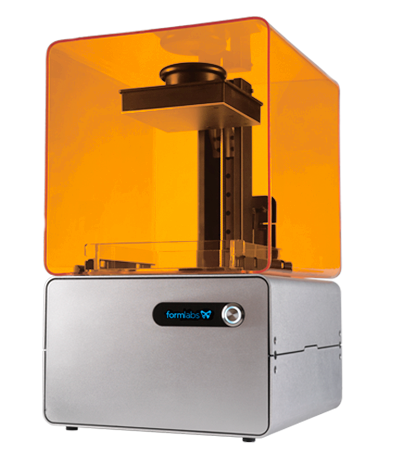| $500,000 SLS 3d printer used by Shapeways |
 |
| $300 Printrbot Simple FFF printer |
| The cheapest SL printer the form 1, $3300 |
Impatient
Consumers are very impatient, if they want something they want it now. FFF is the slowest, topping out about 300mm/s, or about 10 minutes to build a smartphone case. While the others, are just about 10% to 100% faster. However, FFF does not require any finish like SL, that has to be soaked in hydrogen peroxide, or to be dusted like SLS. Depending on job size make FFF the quickest.
Expect The Best
Consumers expect the best, think about it, you expect you computer to run smoothly and get mad if there is a problem. This is the only place that FFF loses, it cannot produce the quality that SL or SLS can produce, it goes down to the 35 microns for the best FFF printer, and about 25 microns for a desktop SL machine, there are no desktop SLA machines yet to compare, but for the bigger industrial printer it blows away all the others away at 15 microns. However, you can get FFF to look as good or even better than SL or SLS by heating up some acetone and putting the parts in the vapor, but I believe the average consumer wouldn't do this.
Cheap
The average consumer has enough to pay the bills, save a little, then have a little bit left fo unessential items like and X-box, or a new TV, or hopefully a 3d printer. This is where FFF shines the, it the the cheapest of all... by a lot. The cheapest SL will you run you about $3,000, the cheapest, SLA will cost around $10,000, and the cheapest FFF will cost $300. The material is also way cheaper, a kilo of filament for a FFF printer will cost about $30, the prices are similar for SLS printers, then jumps up to $300 a kilo for SL resin.
No comments:
Post a Comment